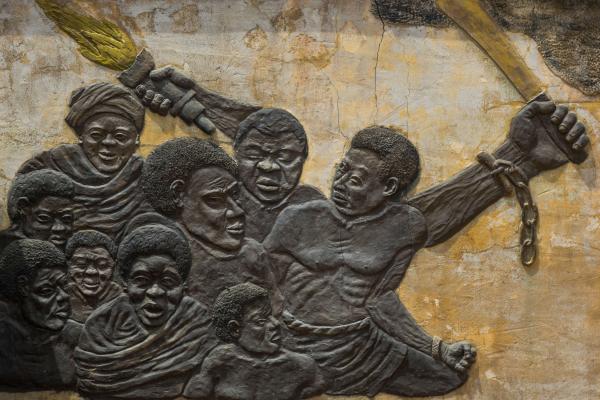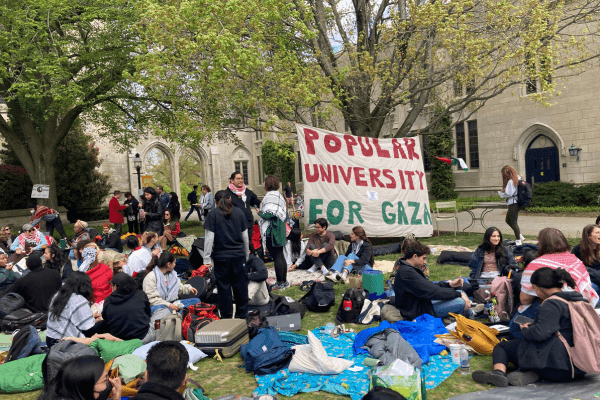On Jan. 3rd when Ilhan Omar, a Democrat from Minnesota, assumed office as a member of the House of Representatives, she became the first Somali-American woman, the first Minnesotan of color, and one of the first two Muslim women elected to Congress.
She was also the first to wear a hijab in the House Chamber, bucking a rule that had been in place for more than 180 years.
In September 1837, a House rule went into effect that stipulated “every member shall remain uncovered during the sessions of the House.” Effectively, the rule banned head covering of any kind from the House chamber, including religious headwear like hijabs, kippahs, and turbans. It took a tide of shifting representation in Congress to consider changing the rule.
“When people are excluded from fully participating in our democracy, we don't have true religious freedom,” Dr. Catherine Orsborn, director of Shoulder to Shoulder, a national interfaith coalition that works to counter anti-Muslim discrimination and violence, told Sojourners.
Hijabs — the kind of headwear worn by Omar — are a quiet expression of modesty by Muslim women. Headwear like turbans and skullcaps are also worn while offering prayers — be it at a mosque, a synagogue, or a gurudwara. “The kippah,” for example, as American Jewish Congress president Jack Rosen said, “represents humility before God” and “remains a way to wear one’s Jewishness with pride.”
As such, unlike a hat, religious headwear marks a tradition and practice of faith that was being curtailed by a blanket ban.
“In the 19th century the political landscape was dominated by white men and so it’s not surprising that such laws were put into effect and kept until now,” Sundeep Morrison, a Punjabi-Sikh writer, actress, author, and activist, told Sojourners.
Morrison said that the issue is personal for her, as her grandfather experienced a similar rule in Royal Canadian Legion Halls, which has since been lifted. "[He served] with great pride and felt that his sacrifices and those of his fellow Sikh veterans were not honored because of the archaic rule that marginalized them," she said.
In line with respecting such religious sentiments. the House voted on Jan. 3rd to permit religious headwear on the floor of the House following a proposal put forth in November by Omar, now-Speaker of the House Nancy Pelosi, and Rep. Jim McGovern (D-Mass.).
Acknowledging the move, Omar tweeted thanks to her colleagues for welcoming her and looks forward to the day “we lift the Muslim ban separating families all over the U.S. from their loved ones.”
With the overturning of the ban after 181 years, Morrison says she now feels hopeful.
“Seeing images of Rep. Ilhan Omar made me feel proud as a Sikh and woman of color. Our laws and representatives should be reflective of our society,” Morrison said. “Bans like this are a deterrent to anyone wearing a head covering as an article of faith to step into positions of public service where diversity is desperately needed.”
But it is important to note that there is still a long way to go in the path to breaking prejudices.
“My grandfather was heckled at an event at the legion [even after the ban was lifted] as fellow veterans looked on without intervening,” Morrison said. “There is much progress to be made and this [lifting of a headwar ban] is one step toward change.”
The U.S. rule change was part of a wider House rules proposal that was approved by the Democratic-controlled House. The package included a ban on lawmakers discriminating on the basis of sexual orientation or gender identity. The amended rule also requires representatives to pay out-of-pocket for any discrimination claims settled against them.
The changes come at a time of massive demographic shifts in the U.S. owing to the growth of immigrant families. Along with this change in demography, the religious landscape of the country too is undergoing a transformation.
“White Christians now account for fewer than half of the public,” according to a 2017 study by Public Religion Research Institute (PRRI).
The study also noted that Muslims, Hindus, and Buddhists are all far younger than white Christian groups. At least one-third of Muslims, Hindus, and Buddhists are under the age of 30. Roughly one-third of religiously unaffiliated Americans are under 30. In contrast, white Christian groups are aging — only about 11 percent of white Catholics and white evangelical Protestants and about 14 percent of white mainline Protestants are under 30.
As goes the country goes the House, as the 116th Congress is the most diverse and comprises more women than any time in history.
“As the First Amendment to the U.S. Constitution guarantees religious liberty, overturning the hat ban to accommodate religious wear, including hijab, kippah, and others, is a natural move,” Orsborn said.
Editor's Note: We have made a correction to clarify that Morrison's grandfather served in the Canadian armed forces, where he was affected by a similar headwear ban at legion halls.
Got something to say about what you're reading? We value your feedback!







